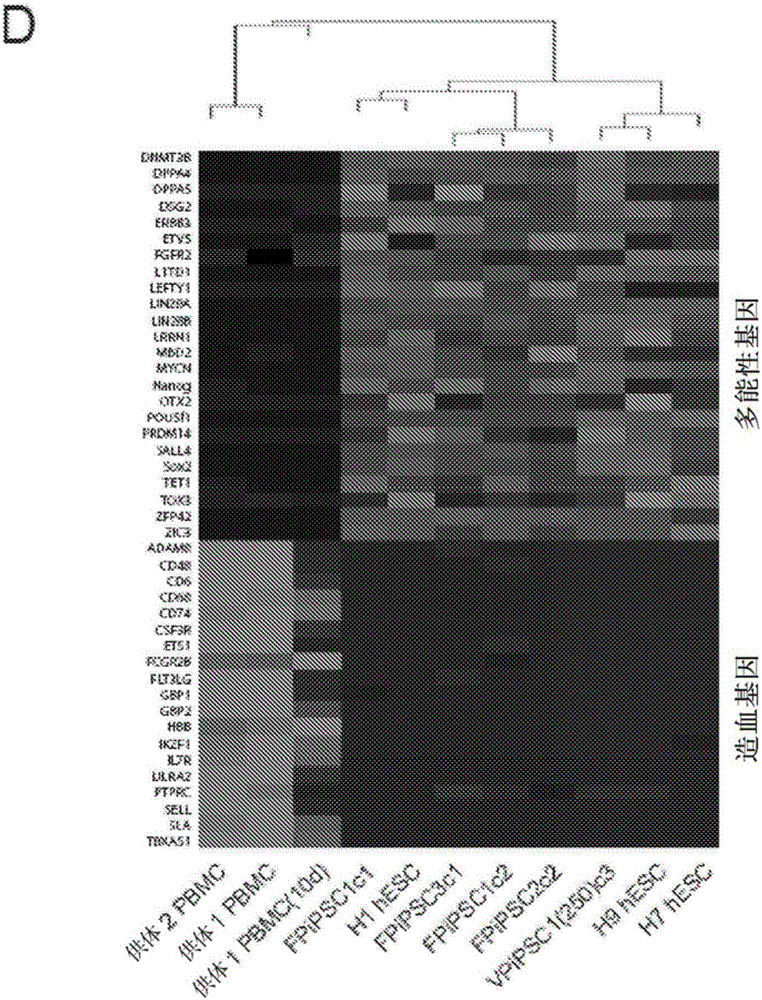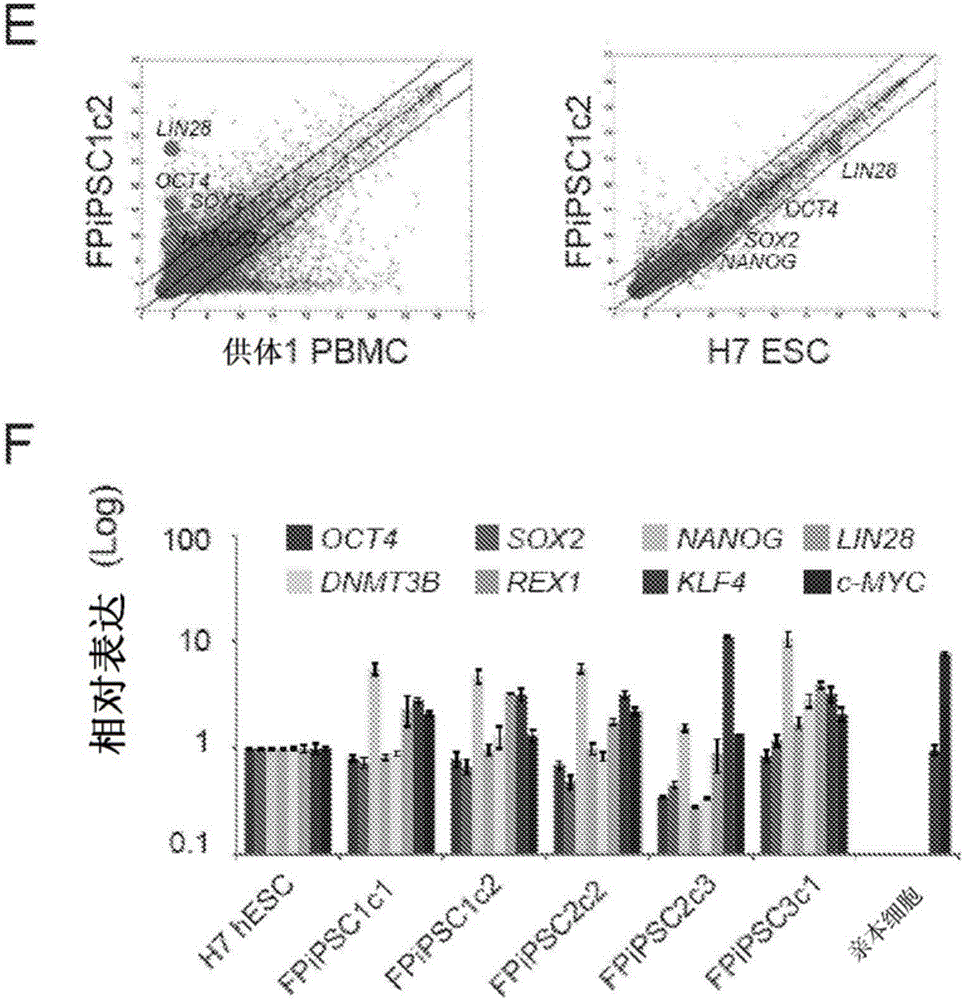Method for inducing pluripotency in a hematopoietic cell
A technology of hematopoietic cells and pluripotency, applied in the direction of cell culture active agents, blood/immune system cells, animal cells, etc., can solve the problem of low reconstruction efficiency
- Summary
- Abstract
- Description
- Claims
- Application Information
AI Technical Summary
Problems solved by technology
Method used
Image
Examples
Embodiment 1
[0101] Efficient derivation of transgene-free hiPSCs from human finger-prick blood is described. A single drop volume of finger prick samples was found to be sufficient in parallel for cell reconstruction, DNA sequencing, and blood serotyping.
[0102] Materials and methods
[0103] Finger prick and venous blood sample. In a sterile laboratory setting, collect 10 µL of blood in a fingertip capillary. Samples were lysed in 2 mL of 1× RBC Lysis Buffer (00-4300-54, eBioscience) for 10 minutes, followed by spinning at 250 g for 5 minutes. Lysis buffer was aspirated immediately after centrifugation. Purified cells were resuspended in 500 μL of cell expansion medium and seeded into one well of a 24-well tissue culture plate (3536, Corning). For DIY experiments, donors were asked to perform their own finger pricks and collect blood into Microtainer tubes containing anticoagulant ((422) 365974, Becton Dickinson). The tube can be pre-sterilized by flame or under UV irradiation. D...
PUM
 Login to View More
Login to View More Abstract
Description
Claims
Application Information
 Login to View More
Login to View More - R&D
- Intellectual Property
- Life Sciences
- Materials
- Tech Scout
- Unparalleled Data Quality
- Higher Quality Content
- 60% Fewer Hallucinations
Browse by: Latest US Patents, China's latest patents, Technical Efficacy Thesaurus, Application Domain, Technology Topic, Popular Technical Reports.
© 2025 PatSnap. All rights reserved.Legal|Privacy policy|Modern Slavery Act Transparency Statement|Sitemap|About US| Contact US: help@patsnap.com



